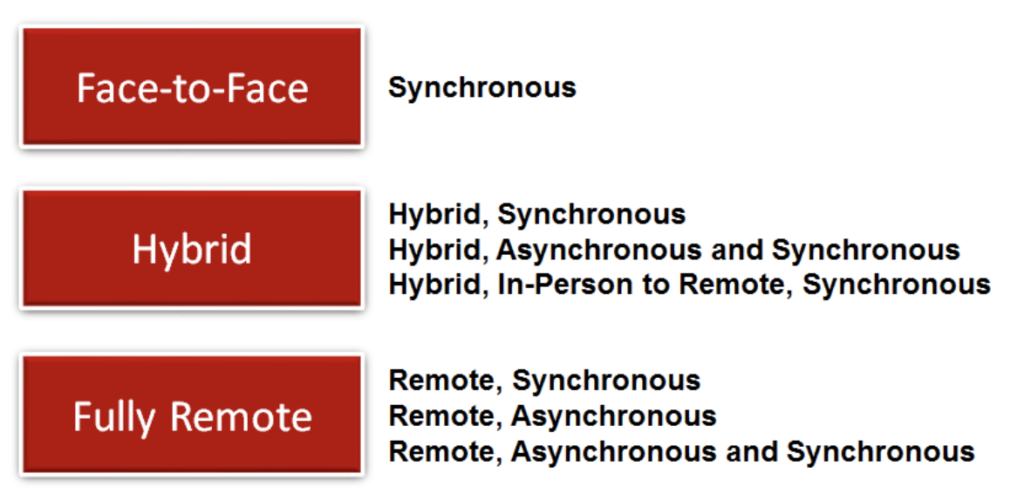Contents
The successful completion of the fall 2020 semester was enabled by the determined commitment of Colgate faculty, staff, and students. Their combined work exhibited patience, compromise, extraordinary energy, and cooperative efforts toward the goal of maintaining a community in good health while teaching and learning in a challenging environment. We succeeded. And now we all need to do it again for the spring 2021 semester. Our experiences from fall 2020 enable us to begin the semester with advantages in hand: We know how to successfully begin a semester with all courses being taught remotely when students are in quarantine. We know how to transition those courses into in-person, remote, or hybrid modes. We know the unique challenges when simultaneously teaching students in a classroom while other students are engaging remotely. Individual teachers have learned which pedagogical strategies and tools have worked well for them, and which have worked less well. We know to expect that many students and faculty will experience psychological, physical, and technical difficulties, and we are now better prepared to deal with those challenges. For example, the new Colgate Red Folder offers guidance and resources on how to respond to, support, and refer students in distress.
Teach Where You Are supported the transition to remote instruction last fall. It is here to do the same for this spring, but now it includes the benefits of knowledge gained from our experiences in the fall. Some of the recent additions of ideas and advice can be found in three components: Training, Additional Resources, Updates. If you are looking for a specific topic, or if you wish to explore the website for something that might possibly be within it, we highly recommend you use the Search function which is easily found at the bottom of each page of the website. We also encourage users to subscribe for Updates to receive email notification of useful new resources as soon as they become available.
Colgate University is a residential liberal arts institution that values the kind of critical inquiry, hands-on learning, free-flow of knowledge, and creation of wisdom that unfold most naturally in face-to-face teaching. The only thing Colgate values more, in fact, is the health and safety of every member of its community. In 2020 and 2021, the coronavirus pandemic prevented us from teaching in the way we do best. Other disruptions in the future may do the same. During such moments and until we can safely return to meeting all of our students face-to-face, we must remain committed to delivering the best education we can, relying on an arsenal of tools, technologies, and strategies.
Teach Where You Are describes a number of optional modes for teaching. These range from fully in-person classes, which may be possible under some limited circumstances, to fully remote and asynchronous formats. From this mix-and-match menu, we faculty members are being invited to choose the mode or modes that best serve our material, our pedagogies, and our personal lives. The administration’s stance on the re-opening of the university grants us enormous flexibility and autonomy. Whatever form our teaching takes this academic year, we should bear in mind Colgate’s strong commitment to frequent, meaningful interactions between faculty and students. There are literally thousands of ways such interactions can unfold; many are described in detail on this site.
Moments of academic disruption challenge us to reaffirm our shared belief that every Colgate student deserves to thrive intellectually and perhaps be transformed by four years on this hill. The promise of a Colgate education gets delivered not all at once but in many moments. When we try to picture what transpires in one such moment, the thing we’re most likely to see is a teacher talking with a student. Let’s all agree to find plenty of ways to keep doing this.
Transitioning to Remote Instruction
“Just because we’re teaching remotely doesn’t mean we’re remote.”
— Professor Lynn Staley, Harrington & Shirley Drake Professor of the Humanities and Medieval & Renaissance Studies in the Department of English
The characteristics of the transition do not fit a simple model. Why? Just as with traditional face-to-face teaching, no single mode or small set of modes can adequately provide a rubric that accommodates the enormous variation across academic disciplines. The expectation for teaching at Colgate is to offer the best courses possible under unique and unfamiliar circumstances. Teaching remotely in full or in part is a temporary adjustment, not a step toward remote teaching’s becoming the prominent feature of a liberal arts education at a residential college. Incorporating remote learning strategies at such an institution is a significant challenge, yet it provides an opportunity to experiment with our teaching and to more deeply explore our pedagogy. We can all emerge from this experience as more nimble and flexible teachers who are also better prepared for the future.
Getting Started
Teaching and learning face-to-face is where Colgate faculty and students thrive. That mode can be temporarily disrupted and we may be required to transition from a fully in-person mode to one that includes some aspects of remote teaching. It is important to keep in mind that running our classes in a remote mode doesn’t mean we will lose the human connection with our students. It does mean, however, that we will need to rely on each other, be patient with ourselves and our students, and utilize our strengths while acknowledging our limitations. Teach Where You Are acknowledges the commitment that we bring to our teaching: Spending time with students in the classroom and during office hours is central to what we do. As we develop our modes of teaching for the forthcoming semester, whether in-person or remote or somewhere in between, we must do our best to honor that commitment.
This Teach Where You Are website offers guidance for reaching goals as we offer our courses in a variety of modes – in person or remote. As you think about your courses and make decisions on how you will teach, keep in mind that our success teaching remotely during the beginning of the COVID-19 pandemic at the midpoint of the spring 2020 semester was largely supported by the communities that were built during the initial in-person part of the semester. Courses that include hybridization of in-person and remote modes are likely to be the most effective for building community, although certainly not the only way for establishing a sense of community. To begin working on the transition process for particular courses, you should:
The components of hybrid and fully remote teaching that we may consider when designing our courses for the fall are described more fully under Strategies on this website. Tools to implement these strategies are offered in the subsequent section. Please familiarize yourself with the rich sets of options and advice in Strategies and Tools to assess how they can help you design and implement an effective teaching strategy for each of your courses.
Course Modes
During moments of extreme disruption — like that which occurred during the COVID-19 pandemic — our course syllabi will need to include provisions for fully remote teaching should illness or decisions by the state necessitate this. We and our students need to anticipate the need for changes in course format, including some changes that may have to be made on the fly. How might this be accomplished while maintaining the standards of the curriculum offered to Colgate students? Thoughtful planning in the design of courses will increase the likelihood of our successes. To design hybrid courses that combine in-person and remote teaching, you can choose from nearly endless combinations that might be reduced to a set of categories, models, or options:

Remote and hybrid teaching modes are diverse. The figure above depicts a set of potential modes that may be employed this semester. The Hybrid and Fully Remote modes are described in the text below.
When it is not possible to teach in a fully in-person mode, several hybrid options are available for consideration:
Option 1: Teaching with some students participating in person while others participate simultaneously remotely
This hybrid (i.e., in-person plus remote) option appears very likely as we look to the anticipated structure of the forthcoming semester. This option does not preclude the use of asynchronous teaching (e.g., recorded lectures). It does present the challenge of how to best simultaneously engage in-class students and other students participating through video (i.e., Zoom). For the sake of simplicity, we can refer to this option as Hybrid, Synchronous.
Option 2: Teaching segments of a course in person, other segments remotely
This hybrid option is likely if the semester begins with all enrolled students remotely participating with the instructor, but then the course is moved to in-person teaching for all students. This transition may happen at any time during the semester. We can call this Hybrid, Remote to In-Person, Synchronous.
Option 3: Teaching remotely as students are in a classroom or elsewhere
This option essentially physically isolates the instructor, because all of the enrolled students would be viewing the instructor on video. It can accommodate an instructor who is required to remain at home, is out of town, or is in an office on campus. We can refer to this option as Remote, Synchronous.
Option 4: Fully remote teaching requiring the instructor to prepare all video lectures or alternative presentations of materials
Students would be required to use the materials on a schedule determined by the instructor. This option should be accompanied by extensive contact and communication with your students. This can be called Remote, Asynchronous.
** After consulting with the Academic Affairs Board the Provost & Dean of the Faculty requested the following update in September 2020: “In all teaching modes, including asynchronous ones, there should be significant synchronous contact and communication with students, beyond office hours, whether collectively, individually, or in groups.”
Option 5: Fully remote teaching using a mix of synchronous scheduled class meetings and asynchronous presentation of materials
Asynchronous materials may include video lectures or PowerPoint presentations. We can refer to this as Remote, Asynchronous and Synchronous.
Option 6: A mix of some or all characteristics of in-person and remote teaching throughout the semester
This category is listed here to emphasize that any single option may not completely suit the needs of an instructor in a particular course at a particular time in the semester. We’ll call this option Anything Goes, because it can include elements of Hybrid, Asynchronous and Synchronous.
This Teach Where You Are website cannot prescribe for us the best category that will fulfill the needs related to the goals of any of our courses, or how content might best be delivered. So we must individually choose what works best for our situation and our students. The options or categories listed above give a feel for the various possibilities within hybrid or a fully remote modes of teaching. Once you have identified a practical mix of in-person/remote, synchronous/asynchronous modes, including when and how you might switch between them, you are then ready to proceed to make decisions regarding fundamental characteristics of courses. You should keep in mind that just because students are learning remotely doesn’t mean they have more time for additional work. As you prepare your class you might ask yourself the following questions:
Just to say it again, the Strategies section of this Teach Where You Are website offers an abundance of possible answers to the questions posed above. For concrete ways you might implement your selected strategies, check out Tools. Even more possibilities are listed under Training and Additional Resources and Updates. The upcoming semester will challenge us, but the success of the previous semester should somewhat smooth the way.
